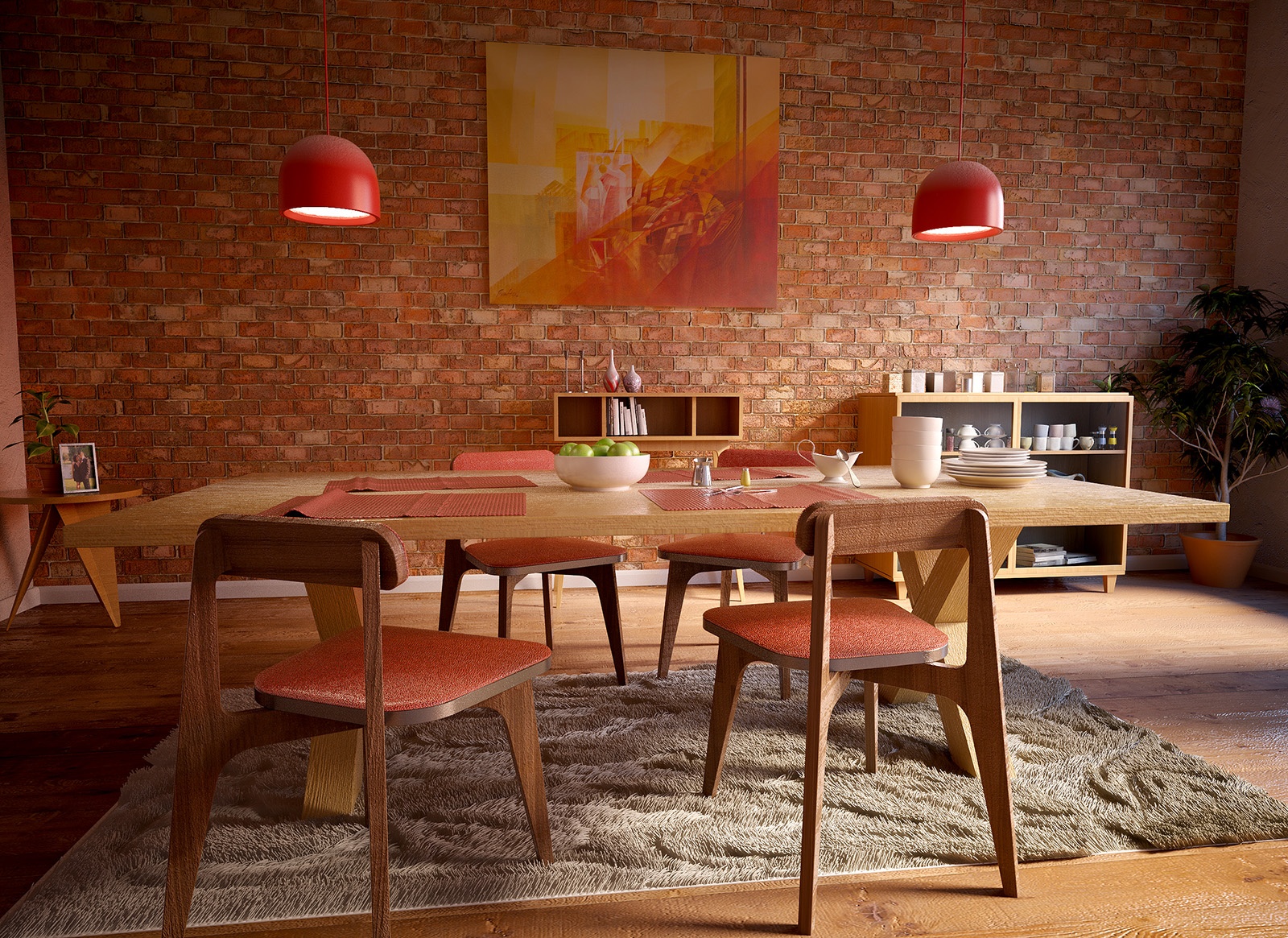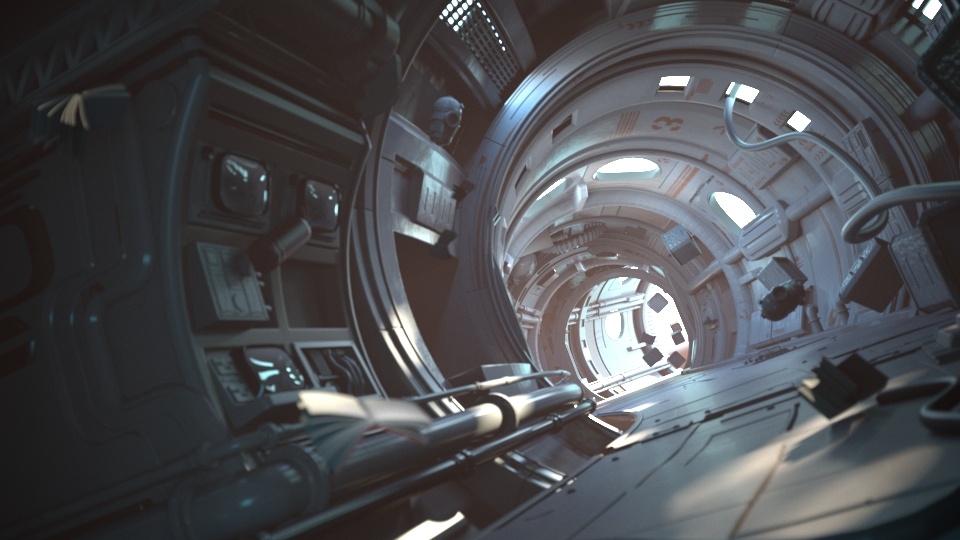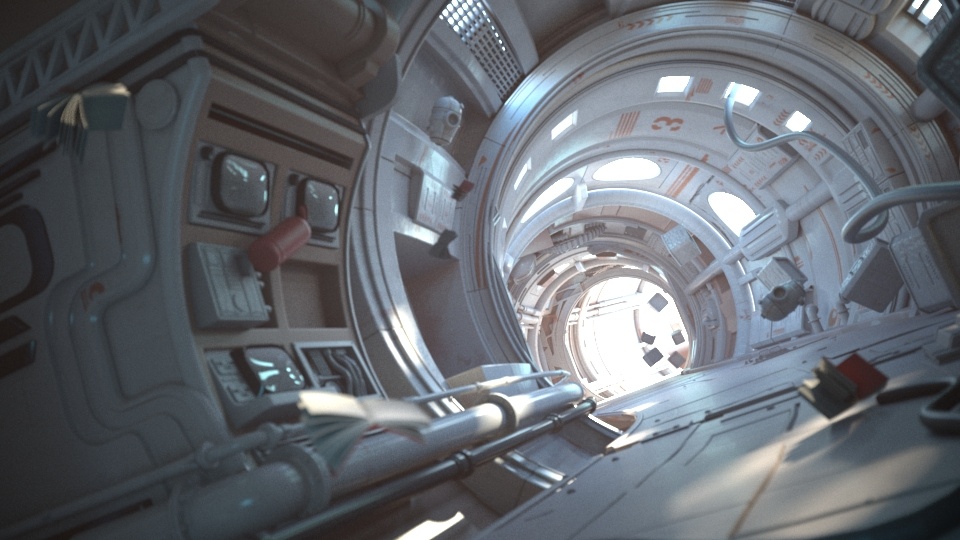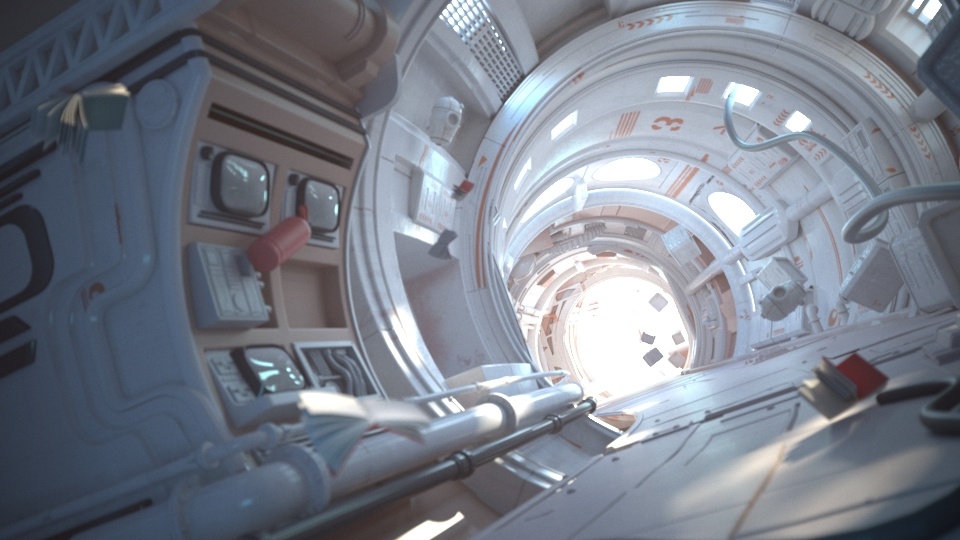This page gives an overview and explanation of Indirect Illumination.
Overview
Indirect Illumination is the illumination in a scene that effectively comes from reflected (or bounced) light as opposed to coming directly from a light source. The computation of indirect illumination through computer graphics is Global illumination (GI). V-Ray implements several approaches (called engines) for computing indirect illumination with different trade-offs between quality and speed. The engine serving as the primary is used to compute the first light bounce, while the secondary engine is used to compute any subsequent bounces.
Using a combination of Brute Force and Light Cache for interior scenes or Brute Force and Brute Force for exterior scenes is recommended in most circumstances for the Primary and Secondary Bounces respectively.
Image courtesy of Spencer Fitch
Primary and Secondary Bounces
The indirect illumination controls in V-Ray concern the secondary diffuse bounces. A primary diffuse bounce occurs when a shaded point is directly visible by the camera, or through specular reflective or refractive surfaces. A secondary bounce occurs when a shaded point is used in GI calculations.
Approaches to Indirect Illumination
V-Ray implements several approaches for computing indirect illumination with different trade-offs between quality and speed:
Brute Force – This is the simplest approach; indirect illumination is computed independently for each shaded surface point by tracing a number of rays in different directions on the hemisphere above that point.
Advantages:
– This approach preserves all the detail (e.g. small and sharp shadows) in the indirect lighting.
– It is free from defects like flickering in animations.
– No additional memory is required.
– Indirect illumination in the case of motion-blurred moving objects is computed correctly.
Disadvantages :
– Might be slow for complex images
Light Cache – Light caching (or light mapping) is a technique for approximating the global illumination in a scene. The light map is built by tracing many, many eye paths from the camera. Each of the bounces in the path stores the illumination from the rest of the path in a 3D structure. The light map is a universal GI solution that can be used for both interior or exterior scenes.
Advantages:
– In many cases the light cache can be used as-is for direct visualization of very fast and smooth previews of the lighting in the scene.
– The light cache is easy to set up. We only have the camera to trace rays from.
– The light-caching approach works efficiently with any lights - including skylight, self-illuminated objects, non-physical lights, photometric lights, etc.
– The light cache produces correct results in corners and around small objects.
Disadvantages:
– The resulting light cache is view-dependent and is generated for a particular position of the camera. However, it generates an approximation for indirectly visible parts of the scene as well. For example, one light cache can approximate all the GI in a closed room.
– Lighting involving motion-blurred moving objects is not entirely correct, but is very smooth since the light cache blurs GI in time as well (as opposed to the irradiance map (deprecated), where each sample is computed at a particular instant of time).
– Requires additional memory.
Irradiance Map – This approach is based on irradiance caching; the basic idea is to compute the indirect illumination only at some points in the scene, and interpolate for the rest of the points. Note: Irradiance Map approach has been deprecated in Maya, Cinema 4D, and Houdini, where the primary engine is always set to Brute Force.
Advantages:
– The irradiance map is very fast compared to direct computation, especially for scenes with large flat areas.
– The noise inherent to direct computation is greatly reduced.
– The irradiance map can be saved and reused to speed up calculations of different views for the same scene and of fly-through animations.
– The irradiance map can also be used to accelerate direct diffuse lighting from area light sources.
Disadvantages:
– Some details in indirect lighting can be lost or blurred due to the interpolation.
– If low settings are used, flickering may occur when rendering animations.
– The irradiance map requires additional memory.
– Indirect illumination with motion-blurred moving objects is not entirely correct and may lead to noise (although in most cases this is not noticeable).
The choice of method to use depends on the task at hand. See the examples below.
For more information about the render settings and parameters for GI and Bounce Engines, please check the GI pages.
Example: Comparisons of Different GI Methods
These examples show the effect of the different secondary engines. Note that by default Brute Force has 3 light bounces and Light Cache works with 100 light bounces. All the examples are set to their default values.




